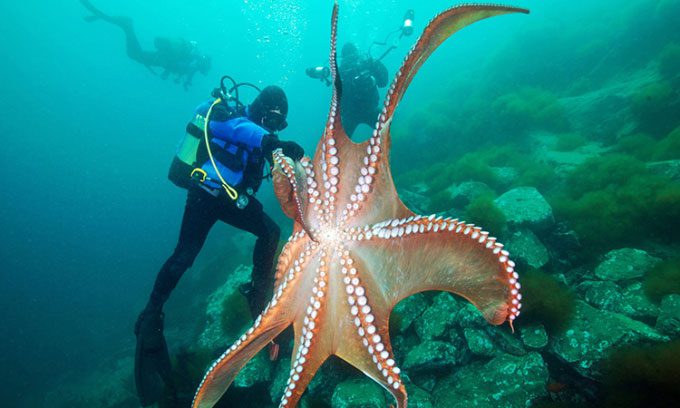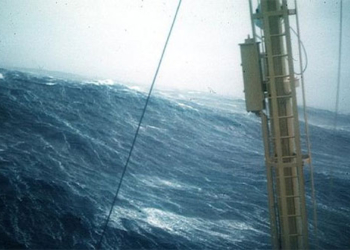Octopuses are complex creatures with multiple hearts that pump blue blood throughout their bodies, and they can even stop beating for extended periods.
According to biologist Kirt Onthank at Walla Walla University in the United States, each octopus has up to three hearts. This is also true for their closest relatives, squids and cuttlefish.
The largest and strongest heart, known as the systemic heart, is located in the center of the octopus’s body. It pumps oxygenated blood throughout the body but does not send it to the gills.
The other two hearts are relatively smaller and weaker, known as branchial hearts. Each branchial heart is attached to one of the octopus’s two gills to pump blood through the gills, which is why they are also referred to as gill hearts.

Simulation of the three hearts of an octopus. (Photo: Raja Lockey).
Why do octopuses need three hearts? The answer is similar to why humans and other mammals need a four-chambered heart. It is to address the issue of low blood pressure, Onthank explains.
“If a person has low blood pressure, they may feel dizzy or even faint if they stand up too quickly or exert themselves too much. This is due to insufficient pressure to get blood to the brain,” the biologist stated.
Animals also need enough blood pressure to effectively circulate blood throughout their bodies. Octopus gills extract vital oxygen from the water, and then the two branchial hearts help pump low-oxygen blood through the gills. However, the blood passing through the gills becomes oxygen-rich and low-pressure, “which is not ideal for delivering blood to the organs in the body,” Onthank added. “Therefore, octopuses need another heart after the gills (the systemic heart) to create pressure for the blood again, helping to efficiently push oxygen-rich blood throughout the body.”
Humans’ four-chambered hearts function similarly. The two right chambers of the heart (right atrium and right ventricle) pump low-oxygen blood from the veins into the lungs. When the oxygen-rich blood leaves the lungs, it exits at low pressure. The body then sends this oxygen-rich blood back to the heart, specifically to the two side chambers (left atrium and left ventricle). These chambers regulate blood pressure and send it through the arteries to the rest of the body.
In other words, octopuses and humans address the same problem in two different ways: octopuses have multiple hearts, while humans have a multi-chambered heart.
“The three hearts of an octopus serve a similar purpose as your four-chambered heart,” Onthank remarked. “Octopuses are a great example of how a complex and intelligent mollusk can evolve in a completely separate way from vertebrates. They have the same problem but have found different solutions.”

Three divers observing a giant Pacific octopus in the Sea of Japan. (Photo: Alexander Semenov).
A study from 1962 indicated that the heart system of the giant Pacific octopus (Enteroctopus dofleini) can completely stop functioning for extended periods while they are resting. Instead, the gill hearts do all the work.
Additionally, an octopus’s heart also stops for a moment when they swim, and no one is exactly sure why. “I think the best explanation is that swimming puts high pressure on the heart. Rather than trying to fight against that pressure, the octopus’s heart system will pause for a moment while swimming,” Onthank added.
Another difference in the circulatory system of octopuses compared to humans is that their blood is blue. This is because octopuses use a copper-based protein called hemocyanin to transport oxygen in their blood, instead of the iron-based protein hemoglobin found in humans.
Hemocyanin is less efficient than hemoglobin when binding to oxygen at room temperature, but it carries more oxygen in low-oxygen environments and at lower temperatures, making it useful underwater. Additionally, when an octopus’s hemocyanin binds to one oxygen molecule, it is more likely to stick to another molecule. This property makes hemocyanin much better at transporting oxygen than most hemocyanins.





















































